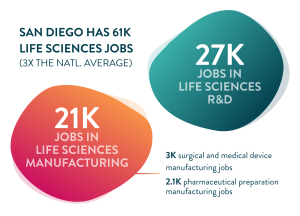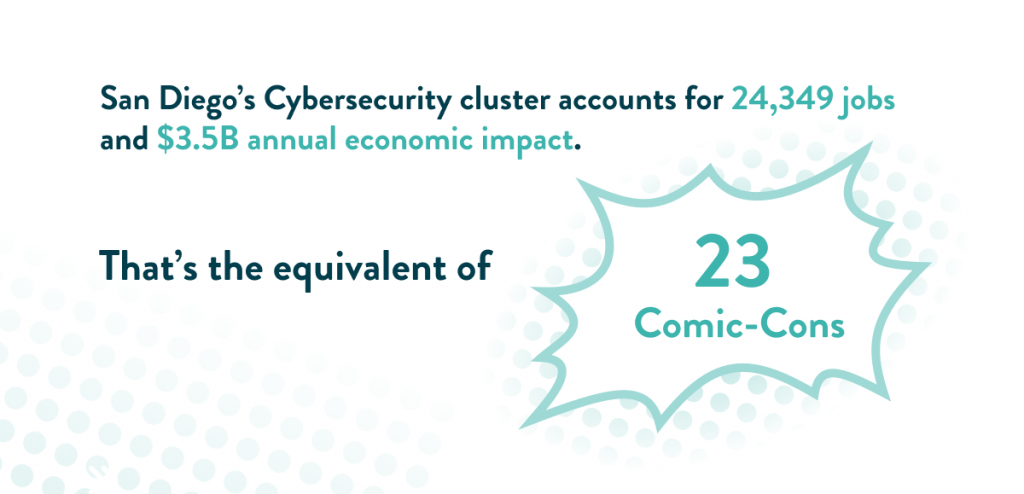New digital tool to help inform inclusive growth in housing, childcare, industry
Today, EDC launched the San Diego Investment Map, a new digital tool to inform strategic, inclusive growth across the region. As part of EDC’s Inclusive Growth Initiative, the Investment Map provides a first-of-its-kind interactive data tool to support decision making across core facets of the local economy: childcare, middle-income housing, and corporate site selection.
Pulling a variety of datasets into an easy-to-use dashboard, the San Diego Investment Map allows users to explore San Diego County through a different lens. The interactive dashboards include data and analyses, and serve to shine a light on the region’s greatest threats to economic competitiveness: a jobs and housing imbalance, among other affordability challenges.
Key takeaways:
- CHILDCARE: San Diego has 327 childcare ‘deserts’ spread throughout the region, making up nearly half of all census tracts. The Investment Map can pinpoint gaps in childcare supply and help narrow sites for prioritization.
- HOUSING: Seventy-four percent of San Diego’s population is middle- to low-income, yet only 2.5 percent of permitted housing development needed in the region accommodates these groups. The Investment Map can identify zones with existing building incentives, community plan updates, as well as new commercial development where workforce housing may be needed.
- INDUSTRY: There are 15.6 million rentable square feet of commercial space being developed across the region, predominately concentrated in northern San Diego. While this includes enough office space for more than 42,000 employees, most workers live instead in the southern and eastern parts of the region. The Investment Map can assist companies in site selection based on occupation hubs, commute trends, and other infrastructure assets that meet their operational needs.
“The San Diego Investment Map serves as a tool for local policy makers, developers, and employers to make informed and deliberate decisions to prioritize the region’s inclusive growth. Using geographic storytelling, the map makes obvious the gaps in our economy—limited childcare; disjointed development both in terms of location and income-level; rising costs with no end in sight. Data-driven solutions to alleviate these challenges will safeguard San Diego’s competitiveness,” said Teddy Martinez, Sr. Research Manager, San Diego Regional EDC.
About the Inclusive Growth Initiative
The innovation economy will continue to make San Diego more prosperous than many of its peers, but it is not accessible to the fastest-growing segment of the region’s population. This mismatch between our regional assets and our economy’s future needs will consistently erode the region’s competitiveness.
Launched in 2018, EDC’s Inclusive Growth Initiative serves to communicate these challenges, making the business case for economic inclusion across San Diego. By 2030, County, City, private sector and academic leaders have pledged their commitments to the initiative’s goals: 50,000 new quality jobs in small businesses, 20,000 new skilled workers annually, and 75,000 newly thriving households. See how we’re tracking here.
The San Diego Investment Map marks a new tool for employers and stakeholders to engage in this work, specifically tackling the thriving households goal.
“Inclusion is an economic and business imperative. It’s more than DE&I in the workplace—it’s about ensuring all San Diegans have the resources and infrastructure needed to thrive in this region. The Investment Map highlights all the work we still have to do to make that possible,” said Lisette Islas, EDC vice chair of Inclusive Growth, and EVP and Chief Impact Officer of MAAC.
The San Diego Investment Map was authored by San Diego Regional EDC, with support and counsel provided by Buzz Woolley and Mary Walshok.
Learn more about inclusive growth
Interested in a demo, or getting involved? Contact EDC:
Contact SDREDC
 Life Sciences is an integral and rapidly growing piece of the San Diego regional economy. In 2021 alone, San Diego Life Sciences companies pulled in 13.1 percent of the $38.6 billion invested into Life Sciences nationwide. Supporting this growth, San Diego ranks fourth (4,300 in 2020) in Life Sciences degree completions among peer metros. Future and ongoing investment in Life Sciences companies and talent—most especially around compensation and accessibility—will ensure the longevity of this high impact industry and support its ability to compete.
Life Sciences is an integral and rapidly growing piece of the San Diego regional economy. In 2021 alone, San Diego Life Sciences companies pulled in 13.1 percent of the $38.6 billion invested into Life Sciences nationwide. Supporting this growth, San Diego ranks fourth (4,300 in 2020) in Life Sciences degree completions among peer metros. Future and ongoing investment in Life Sciences companies and talent—most especially around compensation and accessibility—will ensure the longevity of this high impact industry and support its ability to compete.